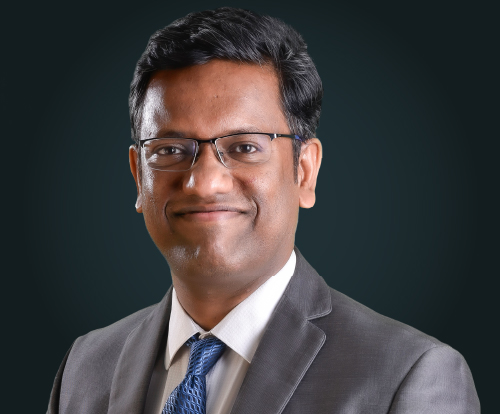Life is full of uncertainties, and one way to provide your child with opportunities is by planning and saving for their future needs. Quality education and healthcare are two of the most important requirements that you need to plan for your child. Having a financial cushion in place can help you provide quality education and medical care, when needed, for your child. You may even want to gift them the wedding of their dreams when they grow up. To meet all these goals, you need to start financial planning for your children as soon as possible. An effective way to accomplish this is by investing in mutual funds.
In this article, we will explore how to save your child’s future with mutual funds and the factors you should consider when making this investment.
- 5 steps to plan for your child’s future
- Invest in mutual funds keeping your risk appetite in mind
- Start a systematic investment plan (SIP)
- Review your investments periodically
- Liquidate your mutual fund investments wisely
5 steps to plan for your child’s future
Here are the 5 steps to secure your child’s future with mutual funds:
Step 1: Set clear goals
One of the first steps to secure your child’s future is to determine your financial goals for them, such as education, healthcare, and so on. You can create a single overarching goal where you save and invest holistically towards your child’s financial future. Or you can create separate goals for school admissions, higher education, healthcare, weddings, and so on.
Be specific about the amount required for each goal and the timeframe to achieve them. You may also want to invest in different mutual fund schemes depending on the nature of the goals. However, a little bit of timely financial planning can go a long way in ensuring financial stability for your child and a sense of fulfillment for you.
Invest in mutual funds keeping your risk appetite in mind
Assess your risk tolerance and choose mutual fund schemes that align with your risk profile. You may want to diversify your portfolio to keep the risk lower. If you are starting a little later than you would have ideally wanted to, you can invest in flexi cap funds or other types of actively managed schemes.
Equity and equity-oriented funds tend to offer relatively reasonable returns, especially in the long term. However, they also come at a higher risk level. Debt mutual funds may suit you if you have a low-risk appetite.
Start a systematic investment plan (SIP)
SIPs allow them to start investing with small amounts and are also flexible regarding the installment amount, frequency, and scheme tenure. Another benefit of investing in mutual funds with an SIP is that you can automate the investments. This means that the money will be automatically invested into the fund from your account without you playing an active part in it.
SIPs encourage disciplined investing and help you benefit from rupee-cost averaging, where you buy more units when prices are low and fewer when prices are high. You can increase the installments as your income increases.
Review your investments periodically
When you sit down for your financial planning session, you must also decide how often you will review your financial plan. Experts suggest a biannual or quarterly review for most investors. Periodically reviewing your mutual fund investments ensures they are on track to meet your goals. Therefore, adjust your portfolio as needed to account for changing circumstances or risk tolerance.
Liquidate your mutual fund investments wisely
One of the last steps to secure your child’s future with mutual funds is to pay attention while liquidating your investment. Mutual funds offer liquidity, allowing you to access your money whenever you need it for funding unforeseen expenses or emergencies. You may also want to withdraw partially or fully from your mutual fund investment to meet your child’s needs. However, this affects the tax implications on your capital gains.
Hence, always plan your liquidation strategy so that you can reduce the tax liabilities on your mutual fund returns. Debt funds and equity funds are taxed differently, and the tax rate also depends on how long you hold them. If you liquidate the investment too soon, you may have to pay Short-term Capital Gains (STCG) tax which usually turns out to be relatively higher than Long-term Capital Gains (LTCG) tax.
Conclusion
Mutual funds can make it convenient for you to plan for your child's future. You can create a robust financial plan by starting early, setting clear goals, and diversifying your investments. This will ensure that your child has all the opportunities and support they need to thrive in life. Remember that investing for your child’s future is a long-term commitment, and you must regularly review and adjust your portfolio to stay on track. With disciplined and informed investing, you can provide your child with a secure and prosperous future. However, it is always advisable to consult a financial expert before making any investment decisions.
FAQs:
When should I start investing in mutual funds for my child's future?
It's ideal to start as early as possible to benefit from the power of compounding.
How can I mitigate impacted from market volatility on my child’s education fund?
Choose a mix of equity and debt mutual funds to balance risk and consider starting with a conservative allocation that becomes more aggressive over time.
Mutual Fund Investments are subject to market risks, read all scheme related documents carefully. This document should not be treated as endorsement of the views / opinions or as an investment advice. This document should not be construed as a research report or a recommendation to buy or sell any security. This document is for information purpose only and should not be construed as a promise on minimum returns or safeguard of capital. This document alone is not sufficient and should not be used for the development or implementation of an investment strategy. The recipient should note and understand that the information provided above may not contain all the material aspects relevant for making an investment decision. Investors are advised to consult their own investment advisor before making any investment decision in light of their risk appetite, investment goals and horizon. This information is subject to change without any prior notice.


